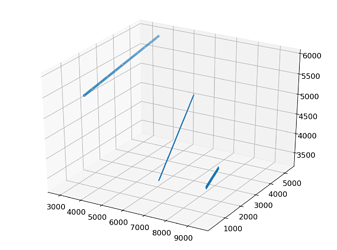@pachitarium Just want to confirm, if the wheel is the position, not the velocity? Is the wheel’s position locked with the horizontal translation of the stimulus? Before the go cue, does the animal keep spinning it or somehow just turn a bit, then stop, and then reset to original position?
@pachitarium Hi, I am interested in the randomness of the delay interval after the stimulus onset—what is the reason for this as opposed to always having a fixed interval before the auditory cue?
In the curated dataset, the wheel is the speed (on figshare its the cumulative ticks of the rotary encoder). The wheel is locked to the stimulus only after the go cue. Before that the stimulus is fixed. Before the go cue the mouse does keep spinning the wheel, almost always in the same direction as the one it eventually reports after the go cue.
Its to keep the mice on their toes! Nick didn’t want the mice to get super stereotyped in their actions, because there is a worry that overly stereotyped behaviors don’t really engage the brain in the same way as more purposeful behaviors.
Thank for clarifying that. The notebook does say position, so we made a modelling decision on that… I hope it is still ok…
Found it. Thank you!
My bad, I have to fix that. I checked my data curation code and I can confirm it is speed. You can integrate it (cumsum) to get position, although it won’t correspond to any real position of the stimulus until after the go cue.
We thought there were reversals, which could be interesting.
Followup Question:- what according to you would be the best way to get best coordinates of individual spiking neurons/clusters. We want to get spiking data and the position for as many neurons as possible. The better the position we get, the better. Is there some way to utilize clusters.depths/spikes.depths to get a position corresponding to its actual position.
This is what i got when i tried plotting ccf_ap, ccf_dv, ccf_lr. I feel like using this and the depth files a accurate position/relative position could be calculated but i dont seem to figure it out
Yeah, you need to reference the neurons correctly to the channels, which is a little tricky. I can try to include the ccf position per neuron in the next data update.
That would be helpfull! If not, i could try doing that if i get an idea of how they are related
Following up this, our group is also interested in reaction time, so it would be great to have them! 
reaction_time is now included, computed from the wheel data. See the new notebook / new data. @mikegachomba , @sanjoshi897
ccf coordinates are now included for every neuron. @MohitK
ss are the exact spike times for each trial, provided in separate data because it didn’t compress as well (see new notebook load_steinmetz_extra). ss_passive is there too. @h.rajpal.
Hello again! We want to look at the effect of previous trial experience on individual trial outcome. Therefore, is it correct to assume that for a given session, trials are by default in chronological order?
Thank you for your help and time!
That is correct to assume.
I have added the timing of the previous trial feedback with respect to current trial stimulus.
So is it correct to classify miss trials as those where ['response_time] > 2 sec?
Not really, sometimes not responding is the correct choice, specifically on no-go trials where the contrast is zero both on the left and on the right. In that case, the animal gets a reward after waiting a sufficiently long time.
Apologies if this has already been asked: are the times in dat[‘response_time’] relative to the start of the trial or relative to the time of the go cue? (e.g. if the response time = 1.9s is that 1.9s after the trial started or 1.9s after the go cue?)
Trial start, which is the same as stimulus onset (500ms or 50 bins from where the data starts).
